How To Remove Panel Under Steering Wheel Honda Accord
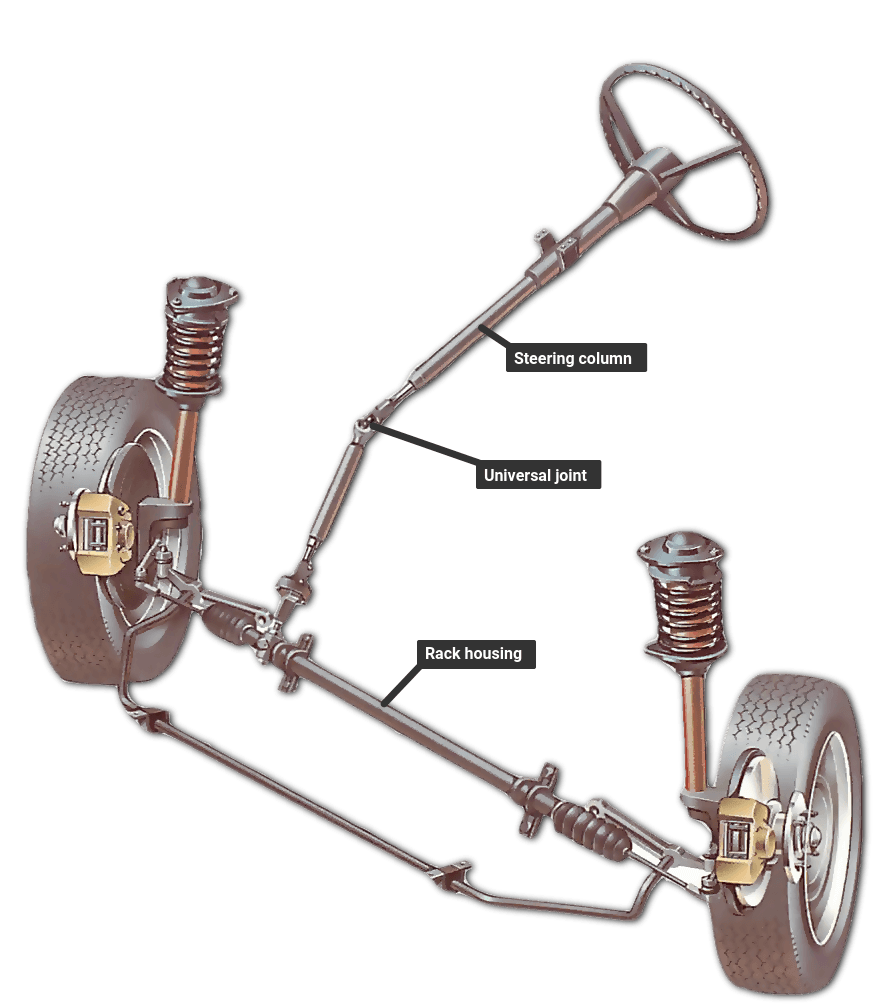
The steering organization converts the rotation of the steering wheel into a swivelling movement of the route wheels in such a way that the steering-wheel rim turns a long way to move the road wheels a short way.
The system allows a driver to utilize only light forces to steer a heavy automobile. The rim of a 15 in. (380 mm) diameter steering bicycle moving four turns from full left lock to full right lock travels about 16 ft (5 yard), while the edge of a route wheel moves a distance of only slightly more than than 12 in. (300 mm). If the commuter swivelled the road bicycle direct, he or she would have to button nearly xvi times every bit hard.
The steering endeavour passes to the wheels through a system of pivoted joints. These are designed to allow the wheels to motility up and downwards with the suspension without changing the steering angle.
They also ensure that when cornering, the inner front wheel - which has to travel round a tighter curve than the outer i - becomes more than sharply angled.
The joints must exist adapted very precisely, and even a little looseness in them makes the steering dangerously sloppy and inaccurate.
There are two steering systems in common use - the rack and pinion and the steering box.
On large cars, either arrangement may be power assisted to reduce further the effort needed to move information technology, peculiarly when the car is moving slowly.
The rack-and-pinion system
Rack-and-pinion gear
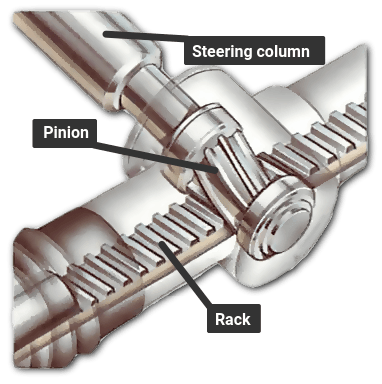
At the base of the steering column there is a small pinion ( gear wheel) within a housing. Its teeth mesh with a straight row of teeth on a rack - a long transverse bar.
Turning the pinion makes the rack move from side to side. The ends of the rack are coupled to the route wheels by track rods.
This arrangement is uncomplicated, with few moving parts to get worn or displaced, and so its action is precise.
A universal articulation in the steering column allows it to connect with the rack without fishing the steering wheel awkwardly sideways.
The steering-box organisation
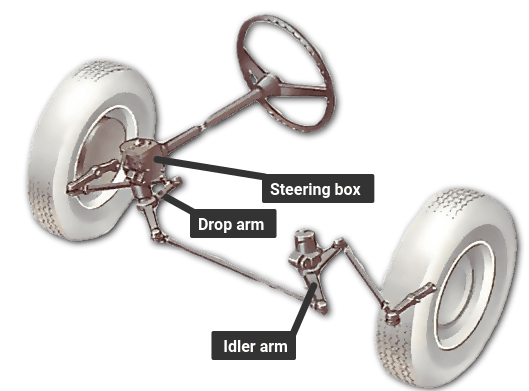
At the base of the steering column there is a worm gear within a box. A worm is a threaded cylinder like a brusk commodities. Imagine turning a commodities which property a nut on it; the nut would move along the bolt. In the aforementioned way, turning the worm moves anything fitted into its thread.
Depending on the design, the moving part may exist a sector (like a slice of a gear cycle), a peg or a roller connected to a fork, or a big nut.
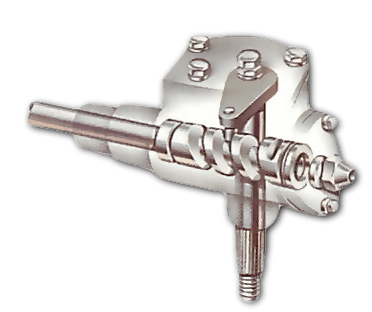
The nut system has hardened balls running within the thread betwixt the worm and the nut. As the nut moves, the balls roll out into a tube that takes them dorsum to the beginning; it is called a recirculating-brawl system.
The worm moves a drop arm linked by a rail rod to a steering arm that moves the nearest front cycle.
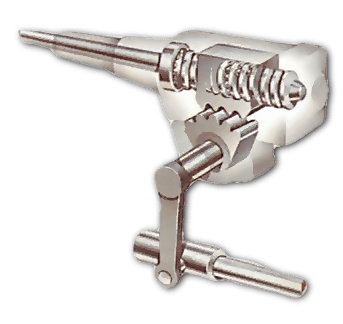
A primal track rod reaches to the other side of the automobile, where it is linked to the other front wheel past some other rail rod and steering arm. A pivoted idler arm holds the far end of the primal track rod level. Arm layouts vary.
The steering-box system has many moving parts, then is less precise than the rack arrangement, there being more than room for wear and displacement .
Power-assisted steering
On a heavy car, either the steering is heavy or it is inconveniently low geared - the steering cycle requiring many turns from lock to lock.
Heavy gearing tin can be troublesome when parking in bars spaces. Power-assisted steering overcomes the problem. The engine drives a pump that supplies oil under loftier force per unit area to the rack or the steering box.
Valves in the steering rack or box open up whenever the commuter turns the wheel, allowing oil into the cylinder. The oil works a piston that helps to push the steering in the appropriate management.
Every bit before long as the driver stops turning the wheel, the valve shuts and the pushing action of the piston stops.
The power only assists the steering - the steering cycle is still linked to the road wheels in the usual way.
Source: https://www.howacarworks.com/basics/how-the-steering-system-works
Posted by: ryaneare1992.blogspot.com


0 Response to "How To Remove Panel Under Steering Wheel Honda Accord"
Post a Comment